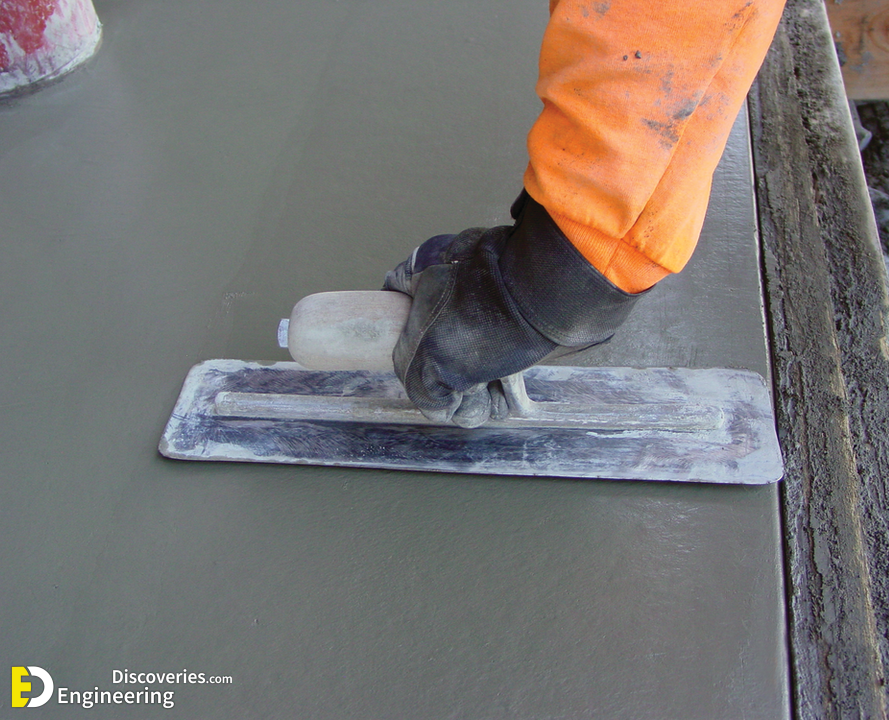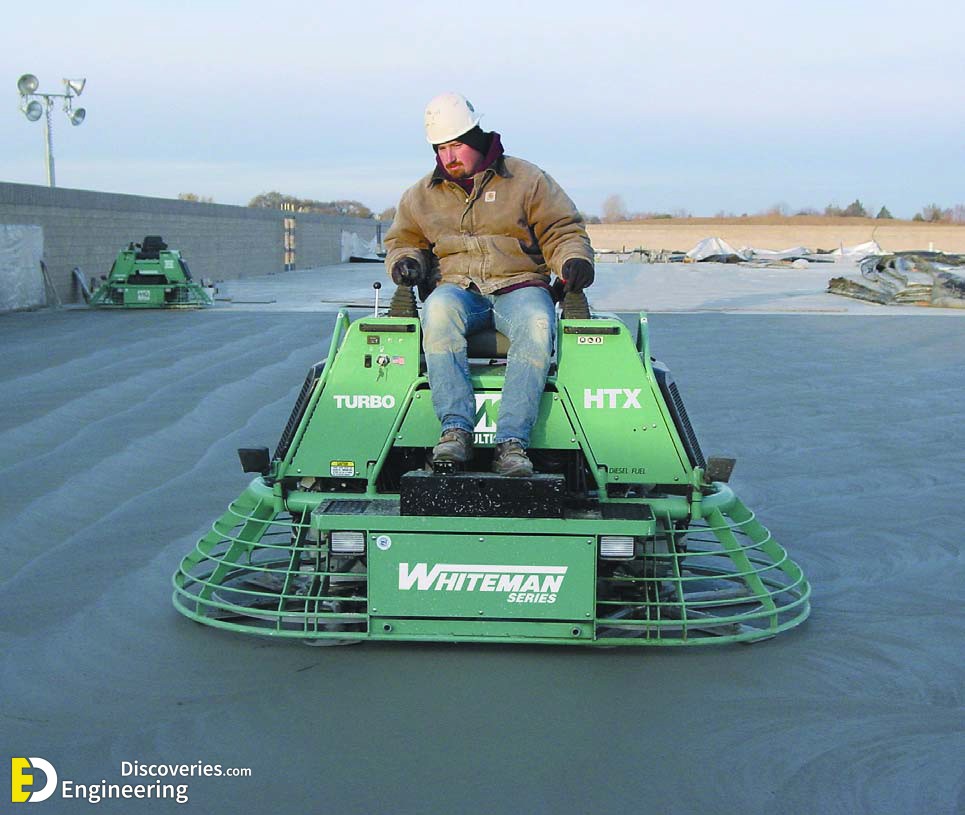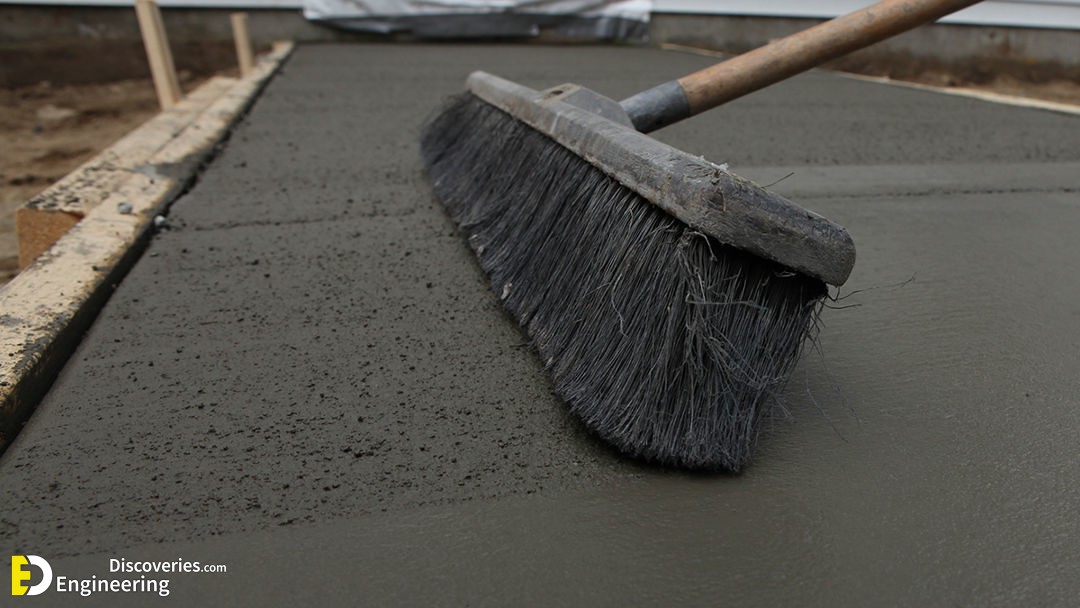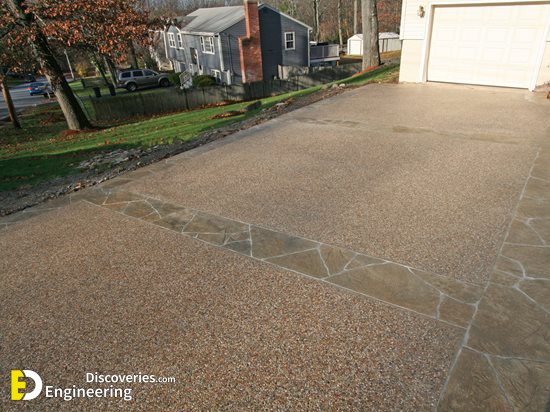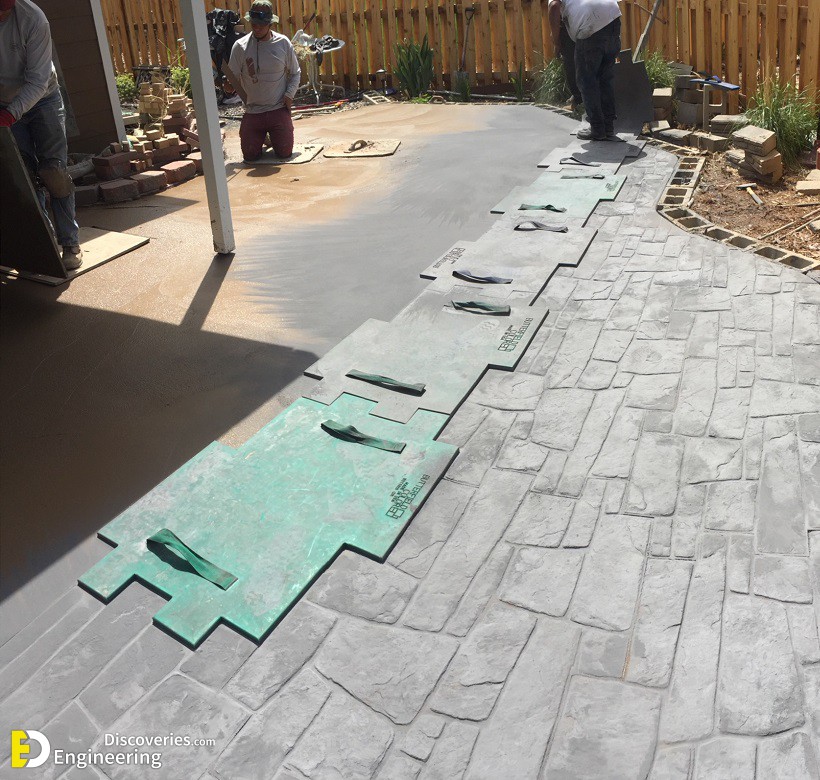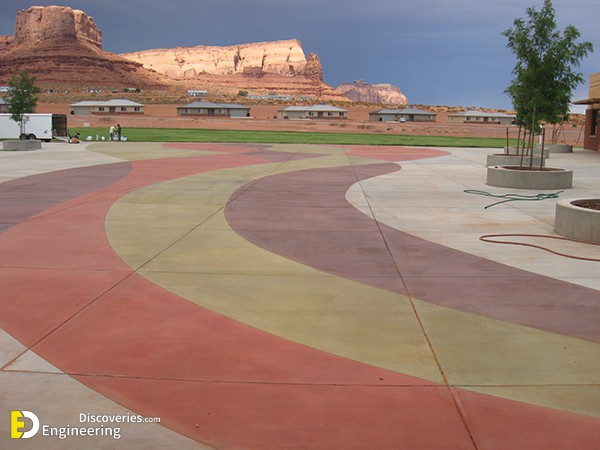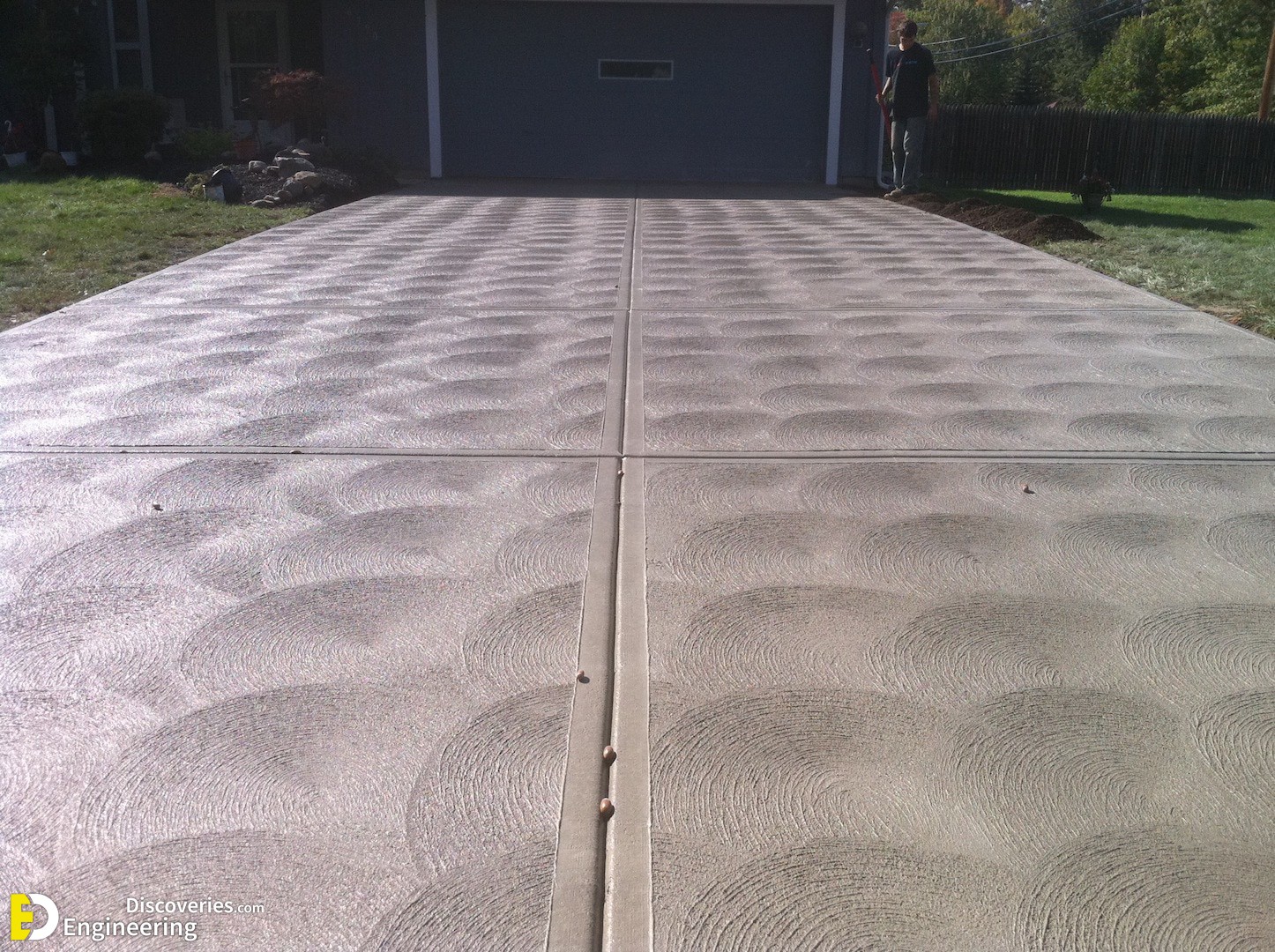Concrete is a composite material made of cement, fine aggregates (sand), coarse aggregates, admixtures (optional), and water, in a proportionate quantity as per the requirements. Each ingredient in concrete has a different role to play. The concrete, on average, is composed of 60 to 80% aggregates, 10 to 15 % of cement, and 15 to 20 % of water.
The cement acts as a binding agent in the concrete mixture. It binds and holds the materials present in concrete. The aggregate provides compressive strength to the concrete. Water is added to a dry mixture of cement and aggregates to give it specific consistency and workability.
Various factors influence the strength of oncrcete and the ease of finishing. The ratio of the raw materials also plays an important role here. The proportion of each one of them is responsible for the strength and finish of the concrete.
Click Here To See 41+ Modern Concrete Finishing Ideas, Ireland
If the water-cement ratio is higher, it will provide an excellent smooth finished surface but on the other hand, the compressive strength of concrete will be compromised. If aggregate content is higher, the concrete strength will be higher but it can make finishing a bit trickier. So, it’s up to the ratio of materials selected for concrete.
Different Types Of Concrete Finishes
Various types of finishes can be applied to a fresh concrete surface. Different types of finishes are suitable for different locations and they have a different purpose for which they are applied. For example, concrete columns have a particular type of finish that is different from the finish applied to concrete floors in a parking area.
Different types of concrete finishes are as follows
- Towelled finish
- Broom finish
- Exposed aggregate finished
- Salt finish
- Stamped concrete finish
- Stained concrete or colored concrete
- Polished concrete finish
1. Trowelled Finish
It is one of the most basic types of concrete finishes. Trowelled finish is very common and is observed at construction sites for concrete elements like a roof slab.
Once the concrete is poured into the formwork, it is flattened with a screed. It is then worked with a trowel to create a smooth, fine concrete surface. Trowels are available in hand trowels and mechanical trowels.
Click Here To See Beautiful Concrete Finishing Ideas
The hand trowel has a flat board or a blade fitted with a handle. It is used in a pull and pushes motion over the concrete surface. This process is repeated until a smooth and fine concrete surface is obtained. A hand trowel is used where the work is in relatively lesser quantity and on smaller projects.
2. Broom Finish
A broom finished concrete surface is a roughly textured surface. The concrete surface is prepared like a trowel finished surface. Once the concrete surface is prepared, a broom is dragged across the surface to give it a rough texture. The rough texture provides traction to the surface and makes it anti-slippery.
Broom finishes are best suited for parking lots and driveways and even in the areas where there is a possibility of slipperiness due to the presence of water or moisture.
- Exposed Aggregate Finish
Exposed aggregates finish is prepared in such a way that the aggregates are visible on the concrete surface. In this finish, the top layer of cement is washed away to allow the aggregate to show through. Different types of aggregates can be used for this type of concrete finish such as attractive stones, seashells, colored glass, granite, etc.
4. Salt Finish
The salt finish is used around swimming pools and other such wet areas. It is a finely textured, slip-resistant surface, prepared by the application of rock salt to the surface of uncured concrete.
The rock salt is sprinkled on the wet surface of concrete, which creates small pits on it. After some time the rock salt is washed away. It leaves behind a finely textured, slip-resistance surface.
5. Stamped Concrete Finish
It is a kind of concrete surface that is mostly used to enhance aesthetics and decorative purposes. Stamping is a technique that adds texture and design to the concrete surface.
The designs and textures are made using panels with designs, placed on the concrete surface. The panel’s design is transferred to the concrete surface.
6. Stained Concrete Or Colored Concrete Finish
After the concrete is placed, leveled, and cured, color is added to the concrete. This type of concrete is often known as stained or colored concrete. Colors are added to concrete to make it decorative. The process of adding color to concrete is known as staining. To protect the colors, a protective layer of sealer is applied after staining.
7. Polished Concrete Finish
The polished surface is provided for extra protection, easy cleaning, and an appealing look. Floors grinders are used for polishing concrete surfaces.
The floor grinders have heavy-duty diamond abrasives embedded into them, that help in polishing the floor surfaces.
8. Swirl finish
Swirl finish is an advanced type of broom concrete finish. In this, using a float or trowel uniform swirled imprints or arc patterns are made across the surface of the wet concrete. The finished result is a subtle pattern that adds more visual effects.
Swirl finish is commonly adopted for outdoor applications such as driveways, patio, etc. Just like a broom finish, it provides very good slip resistance specifically during the wet season.


